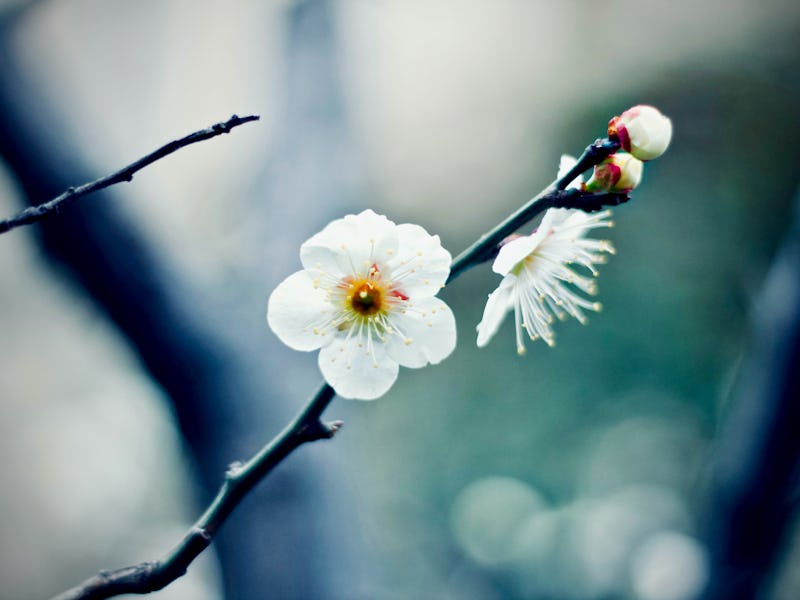Japan's Famous Cherry Blossoms Are Going Rogue
"The number of flowers decreases by the amount of flowers blooming this autumn."

Just as the first robin marks the beginning of spring in the United States, Japan’s cherry blossoms are iconic markers of the season. But this year, they’re early, and it’s freaky as heck. Is the world going crazy? Is it climate change? The real answer is that it might be a little bit of both.
Earlier this week, Japanese weather service Weather News received 354 reports of Yoshino cherry trees (Prunus × yedoensis) flowering all across Japan — a solid six months before they normally bloom. Trees were spotted blooming from Kyushu, in the southwestern part of Japan, all the way to the northernmost prefecture of Hokkaido, Japanese news outlet NHK reported. And while it might seem obvious to blame climate change, the reason for this premature inflorescence is not so simple.
Cherry trees form their flower buds during the summer but a hormone stored in the leaves keeps the buds from opening until the first warm days of the new year. When the weather begins to warm in the spring, the buds burst into delicate white and pink blossoms.
A Confusing Year
But Japan was hit by two strong typhoons this year, and these storms seem to have stripped the leaves from many cherry trees. Without the hormone-laden leaves to keep the trees from blooming, a single warm day over last weekend apparently tricked the trees into welcoming spring.
You can’t help but wonder: will the trees still blossom in the spring?
Hiroyuki Wada, a tree surgeon at the Japan Flower Association, says that since the trees develop a finite number of blooms over the summer during their growth period, any flowers that bloomed in October are gone for good.
“The number of flowers decreases by the amount of flowers blooming this autumn,” Wada told Weather News.
## The Role of Climate Change
It’s hard to say whether climate change is blame for the cherry trees popping too soon. Climate researchers have found that, generally speaking, warmer oceans are making hurricanes and typhoons more severe. But typhoons have hit Japan for centuries, so this phenomenon has surely happened in the past.
Elsewhere, researchers have found that climate change is having startling effects on flowering trees in other urban areas. In a 2006 paper published in Agricultural and Forest Meteorology, Chinese researchers showed that rising temperatures in and around cities had caused four species of trees (including two in the Prunus genus) bloom increasingly early. Each decade between 1954 and 2004, these trees bloomed an average of 1.5 to three days earlier than they had during the previous decade.
It’s certainly possible climate change is to blame for Japan’s cherry trees giving away autumn spoilers for their big spring show, but we’ll have to wait to see how the next few decades pan out before we know whether it’s a pattern.